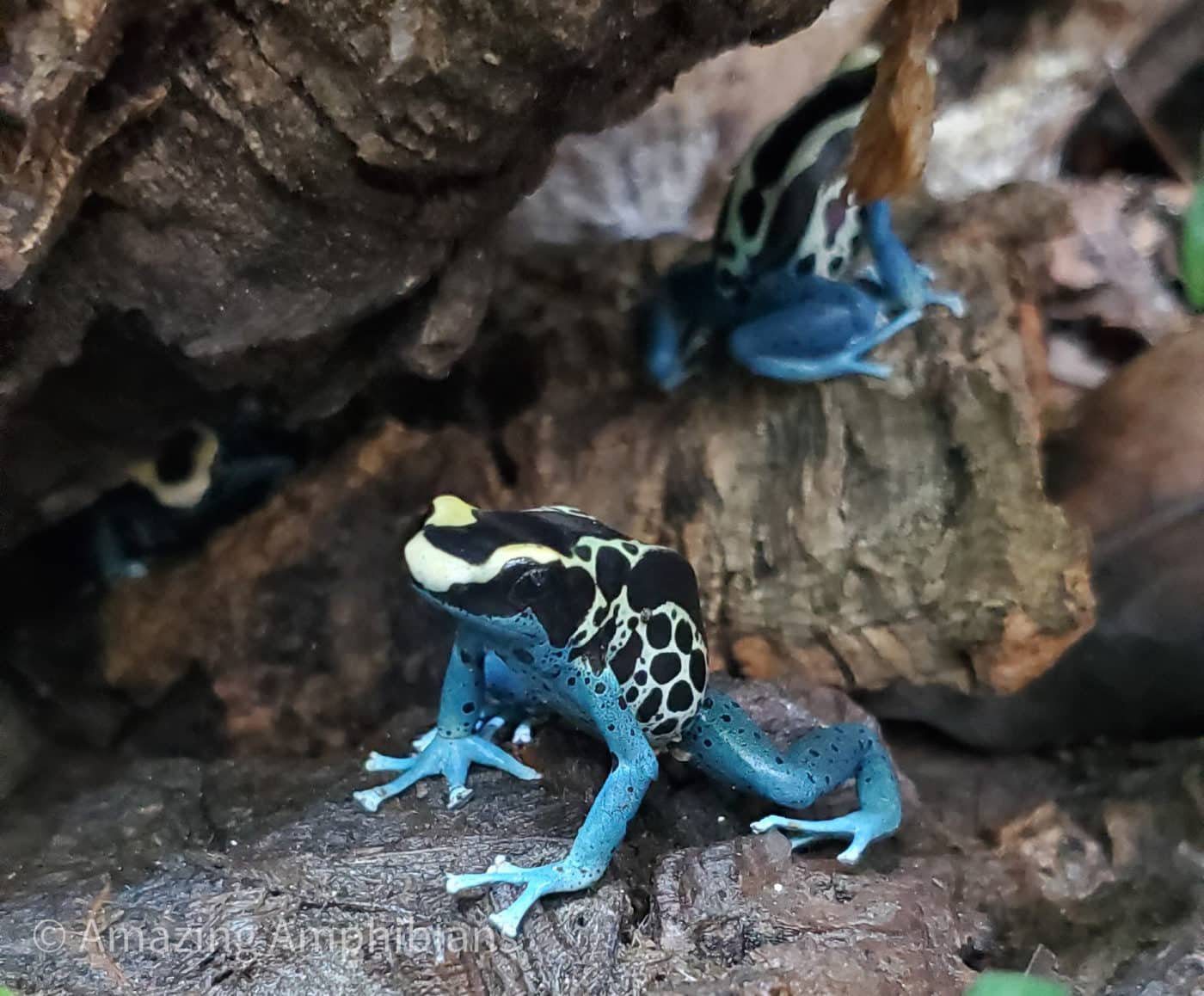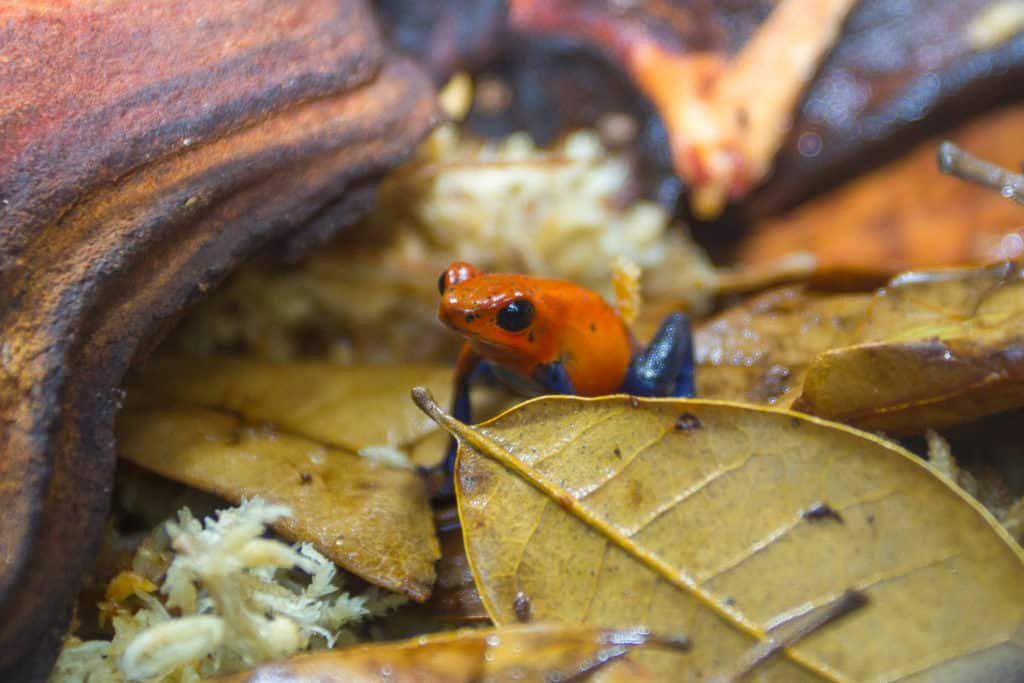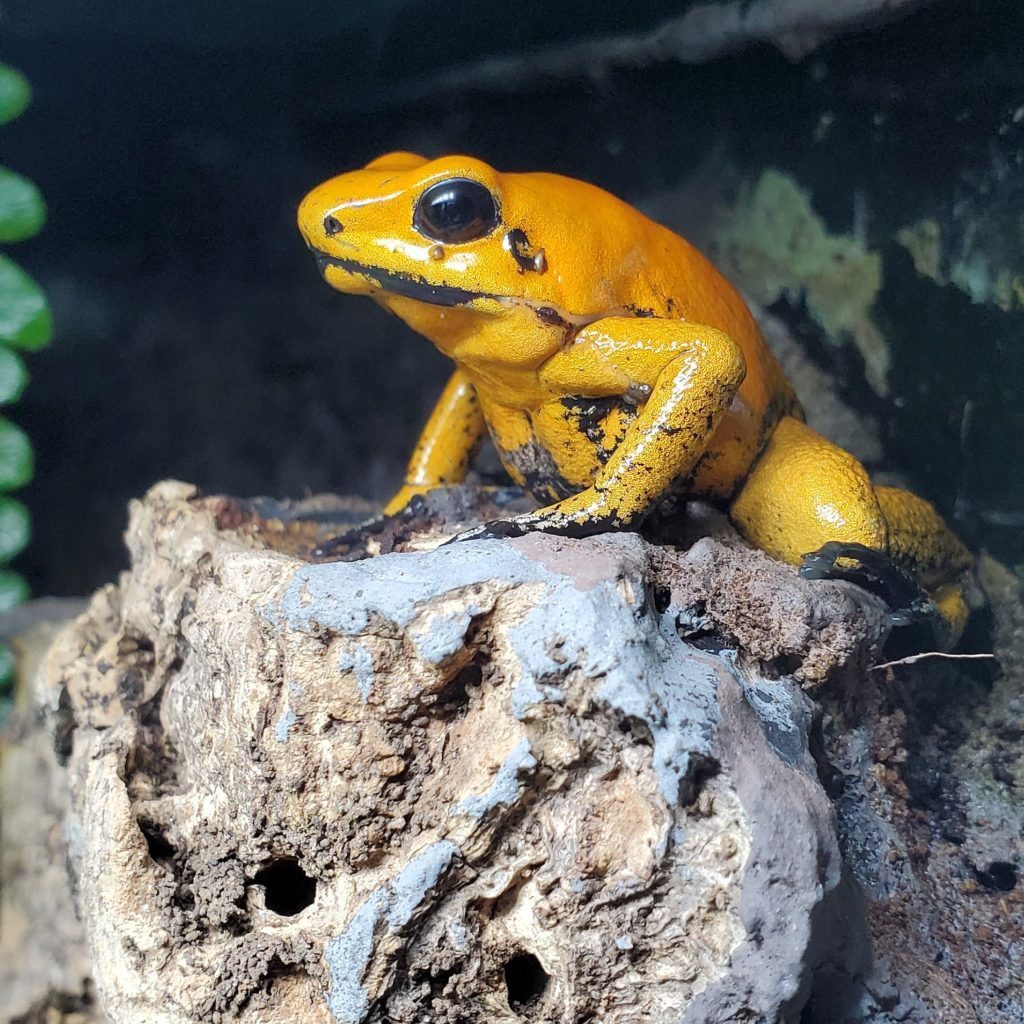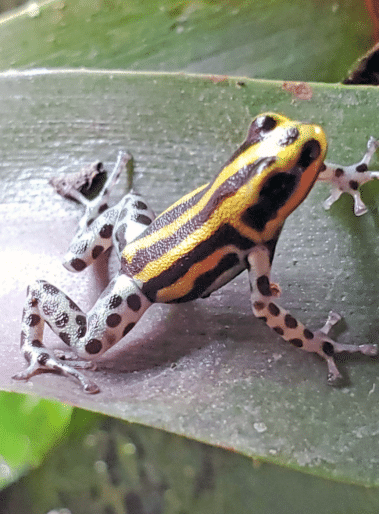Dendrobates tinctorius Care Sheet

General Information: Dendrobates tinctorius are one of the larger species of dart frogs, and are from Suriname, Colombia, Brazil, and Peru. There are more locales of tinctorius than probably any other dart frog. They are
Feeding: Melanogaster or Hydei flies dusted with Calcium every two to three days. Dust with Vitamin A twice per month, and Cartenoid enhancements once per week. 50 Flies per frog in each feeding.
Enclosure/Vivarium Size: At least 5 gallons per frog, an a minimum footprint of 18X18 is recommended even for one frog.
Humidity: 75-85% target, 60-90% acceptable
Lighting: Full spectrum led’s work great, I have noticed a little more activity with a well lit tank, but not overly bright.
Animal Size: Adult females up to 1.5-2.5″, Males slightly smaller
Level of Expertise: Beginner
Sexing: Females are slightly larger, with smaller toe pads. Usually sex-able around 12-18 months
Confidence: Bold
Community Species: No, generally one male and one female or single frogs recommended.
Oophaga pumilio Care Sheet

General Information: Oophaga pumilio are a smaller species found in Central America. A once common species, many locales are now threatened due to deforestation and the illegal pet trade. It is very important that you purchase frogs from a reputable breeder to reduce the market for illegally harvested frogs.
Feeding: Oophaga pumilio are smaller and prefer small food. Melanogaster flies dusted with Calcium every two to three days. Dust with Vitamin A twice per month, and Carotenoid enhancements once per week. 50 Flies per frog in each feeding. Supplement with springtails and dwarf isopods.
Enclosure/Vivarium Size: At least 5 gallons per frog, an a minimum footprint of 18X18 is recommended even for one frog. Taller tanks preferred as this species will hang out in bromeliads for most of the day.
Humidity: 75-85% target, 60-90% acceptable. Fan suggested to move air inside the tank
Lighting: Full spectrum led’s work great, I have noticed a little more activity with a well lit tank, but not overly bright.
Animal Size: Adults reach 1-1.5″,
Level of Expertise: Beginner
Sexing: Males will call and usually have a darker throat patch. Only way to be certain is watching for the call at around a year old.
Confidence: Shy
Community Species: No, females will wrestle to the death.
Phyllobates terribilis Care Sheet

General Information: Phyllobates terribilis are the largest species of dart frogs, and are from Colombia. There are three common types of terribilis: Mint, Orange, and Yellow. Some recently available frogs from Tesoros de Colombia, called black foot orange and black foot yellow are now available in the pet trade.
Feeding: Hydei flies dusted with Calcium every two to three days. Dust with Vitamin A twice per month, and Cartenoid enhancements once per week. 50 Flies per frog in each feeding. From time to time you may supplement with 1/8″ crickets and bean beetles. They will also eat spiders!
Enclosure/Vivarium Size: At least 5 gallons per frog, an a minimum footprint of 18X18 is recommended even for one frog.
Humidity: 75-85% target, 60-90% acceptable
Lighting: Full spectrum led’s work great, I have noticed a little more activity with a well lit tank, but not overly bright.
Animal Size: Adult females up to 2-3″, Males slightly smaller
Level of Expertise: Beginner
Sexing: Females are slightly larger, with smaller toe pads. Usually sex-able around 12-18 months
Confidence: Afraid of nothing
Community Species: Yes these do great in groups
Ranitomeya sirensis Care Sheet

General Information: Ranitomeya sirensis are a thumbnail species, meaning they are around the size of your thumbnail or smaller than a dime. These are fairly bold with a brilliant call during the day. They stay small and are not easily sexed other than seeing calling (only by males). Morphs include highland, orange Pasco, lowland, and standard.
Feeding: Melanogaster fruit flies dusted with Calcium every two to three days. Dust with Vitamin A twice per month, and Cartenoid enhancements once per week. 50 Flies per frog in each feeding.
Enclosure/Vivarium Size: At least 5 gallons per frog, an a minimum footprint of 18X18 is recommended even for one frog.
Humidity: 75-85% target, 60-90% acceptable
Lighting: Full spectrum led’s work great, I have noticed a little more activity with a well lit tank, but not overly bright.
Animal Size: Adult females approximately .5″
Level of Expertise: Beginner
Sexing: Females are slightly larger, with smaller toe pads. Usually sex-able around 12-18 months
Confidence: Medium to Bold
Community Species: Groups are not recommended, 1:1 is best for beginners
